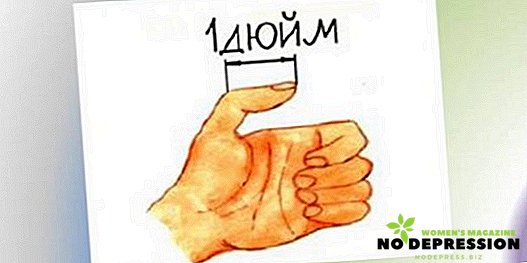Furlong, cable, yard, foot are all non-metric units of length that are used in the USA and England. In other countries, you can never encounter them, unlike another measure of length - an inch, so it will be interesting to know how many inches per inch.

What is an inch: origin and meaning
There are three versions of the origin of the name of this non-metric unit of measurement. According to the first legend, the solution lies in the title itself, which translates from Dutch as "thumb", so this is the width of the thumb on the hand of an adult man.
The second version of the origin relates this unit of measurement to the name of the English king Henry I.
An inch is a value equal to one thirty-sixth of a yard, which is either the distance from the tip of the nose to the thumb on the arm of the previously named king, or the length of his sword.
The third explanation is associated with the term "legal inch", which is equal to the length of the three dried barley kernels from the middle of the spikelet, attached to each other at their ends. This definition of the unit of measurement was established by the act of the King of England Edward I.
Scope of concept in.
Despite the fact that the International Organization of Legal Metrology recommended to exclude this measure of length from circulation, this concept is found in measuring the diameters of water and gas pipes, various parts and assemblies of computer equipment, the diameter of wheels of automobile wheels and motorcycles, the diagonal of the matrix of digital cameras.

In the latter case, not the usual inch is most often used, but Vedikonovsky, which is equal to 2/3 American (English), which corresponds to 16.93 mm. This unit of measurement appeared due to the inertia of the habit of Vedicon (transmitting tube of television and video cameras), in which the outer diameter was more often equal to 1², and the diameter of the photosensitive target was 2/3 of the outer diameter.
The “pipe” inches are interesting from the point of view of conversion to the metric system, since they more express the conditional passage of the pipe, rather than its external or internal diameter. To convert them into millimeters, you need to use the reference literature, since there is no match formula.
How many cm in 1 inch
The international designation of this non-metric unit is inch or in, graphically it is reflected by a double stroke - ".
In different countries, this value had its own definition, which, when converted to the metric measurement system, could be from 2.32 cm (in Spain and Mexico) to 3.33 cm (in China). Since 1958, this unit refers to a value equivalent to 2.54 cm (English or imperial).

1 inch - how many cm in the diagonal of the TV?
The ratio of the height and width of the screen in most modern TVs is 9 to 16, so one of the main characteristics of the monitor includes the size of its diagonal. Image size depends on its size and therefore a comfortable viewing distance.
To measure the diagonal, not only on televisions, but also on computer monitors, displays of digital cameras, tablets and touch phones, use a non-metric unit of length, denoted by two strokes.

Despite the fact that most modern technology is produced in Eastern countries (Japan, Korea, China), it is customary to measure the diagonal in English inches (2.54 cm). Thus, for example, a 32 ”TV will have a distance of 82 cm between the upper right and lower left corners of the monitor.
Table
Exact match 1² is 25.399599194324 millimeters, for ease of calculation this value is rounded to 2.54 centimeters. The ratio of other values to centimeters is given in the following table:
| Inches | 2 | 3 | 4 | 5 | 6 | 7 | 8 | 9 | 10 |
|---|---|---|---|---|---|---|---|---|---|
| Centimeters | 5,08 | 7,62 | 10,16 | 12,7 | 15,24 | 17,78 | 20,32 | 22,86 | 25,4 |
And a few more explanations on the translation of inches to centimeters - in the next video.












